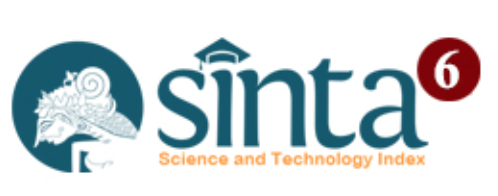EDUKASI GIZI BALITA DALAM PENCEGAHAN STUNTING DI DESA PENATIH DANGIN PURI, BALI
Abstract
The village of Penatih Dangin Puri is one of the villages in the East Denpasar district, City of Denpasar, Bali Province, Indonesia. The village of Penatih Dangin Puri has 13 subvillage who organize 13 integrated service centers, called Posyandu. Posyandu is a community-sourced health center that gives health services to toddlers, especially in monitoring the growth and development of a child, thus it can early detect the impairment in the growth and development of a child. Early detection is essential for a child’s well-being in planning an early intervention to reverse the impairment in growth and development into normal. One of the child’s growth impairments which becomes a national issue and a priority program in Indonesia is stunting, defined as the impairment of growth caused by chronic insufficiency of nutrients from the womb until the first period after the child was born. This chronic insufficiency of nutrients in stunting, especially during the first 1000 days of life, might cause the irreversible impairment in child development, which can be short-term, intermediate, and long-term impact. The quality of children as the future generation will affect the social and economic growth of a country. This community service (PkM) is a program to improve toddlers’ nutrients to prevent stunting which was integrated with Posyandu among 13 subvillages of Penatih Dangin Puri. The community partner contributes to the needed facilities and equipments, inviting the toddler’s mother, and community engagement during the outreach. This community outreach was held as health education about how to prevent stunting which can be applied in the family and followed continuously in daily life. The result of PkM showed increasing knowledge on preventing stunting through household food security. All the participants, who were the toodler’s mothers, were motivated to apply the “My Plate’ method in preparing the complementary food that is relevant to the child’s age. This community outreach will be held continuously in Posyandu by empowering community partners.
References
Anon. n.d.-a. “University of Lampung | LPPM-UNILA Institutional Repository (LPPM-UNILA-IR).” Retrieved March 25, 2023 (http://repository.lppm.unila.ac.id/9767/).
Anon. n.d.-b. “View of Permasalahan Stunting Dan Pencegahannya.” Retrieved March 25, 2023 (https://akper-sandikarsa.e-journal.id/JIKSH/article/view/253/211).
Aryastami, Ni Ketut. 2017. “Kajian Kebijakan Dan Penanggulangan Masalah Gizi Stunting Di Indonesia.” Buletin Penelitian Kesehatan 45(4):233–40. doi: 10.22435/bpk.v45i4.7465.233-240.
Budiastutik, Indah, and Achadi Nugraheni. 2018. “Determinants of Stunting in Indonesia: A Review Article.” International Journal Of Healtcare Research 1(1):2620–5580.
Dewey, Kathryn G., and Khadija Begum. 2011. “Long-Term Consequences of Stunting in Early Life.” Maternal and Child Nutrition 7(SUPPL. 3):5–18. doi: 10.1111/j.1740-8709.2011.00349.x.
Leroy, Jef L., and Edward A. Frongillo. 2019. “Perspective: What Does Stunting Really Mean? A Critical Review of the Evidence.” Advances in Nutrition 10(2):196–204. doi: 10.1093/ADVANCES/NMY101.





